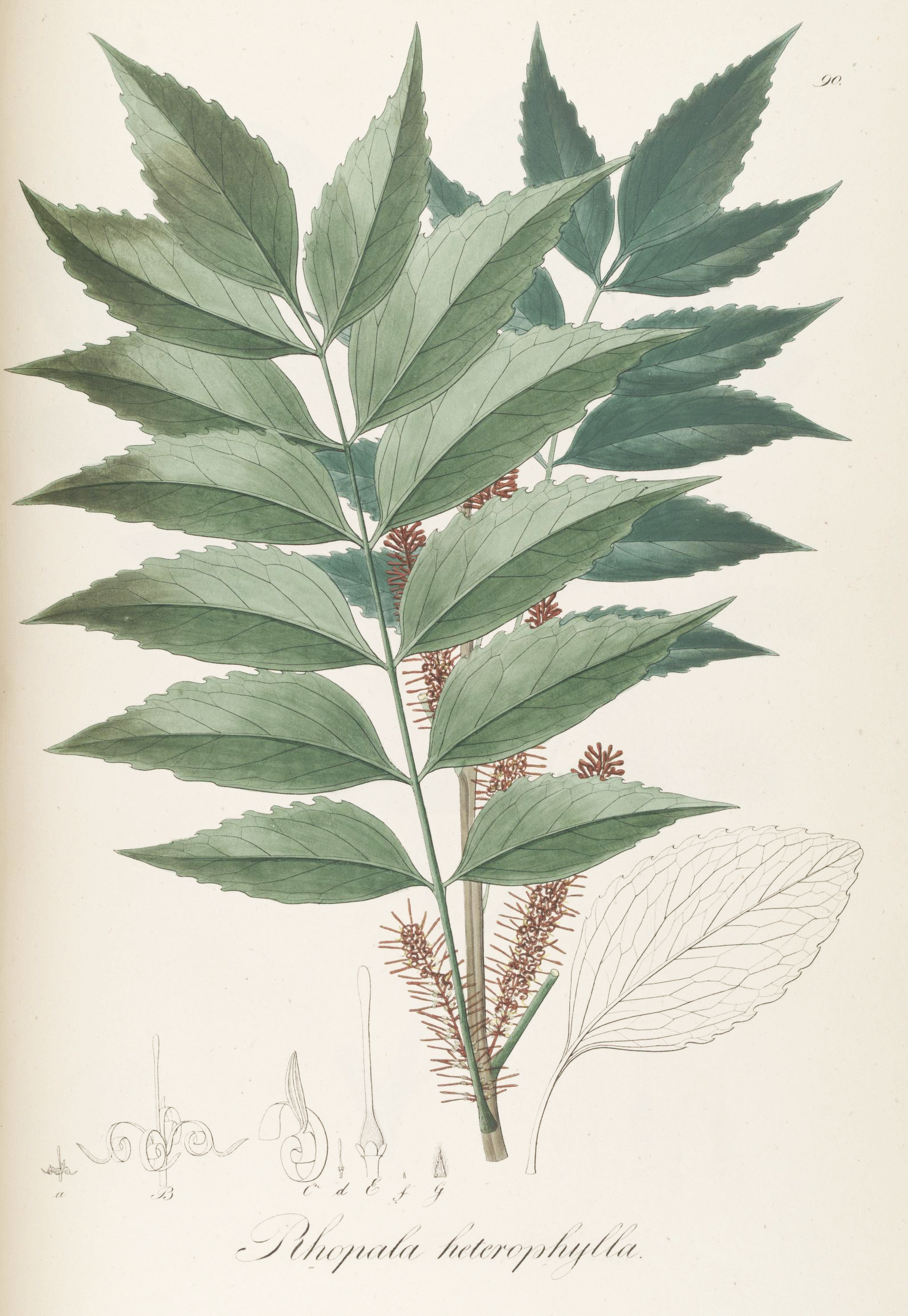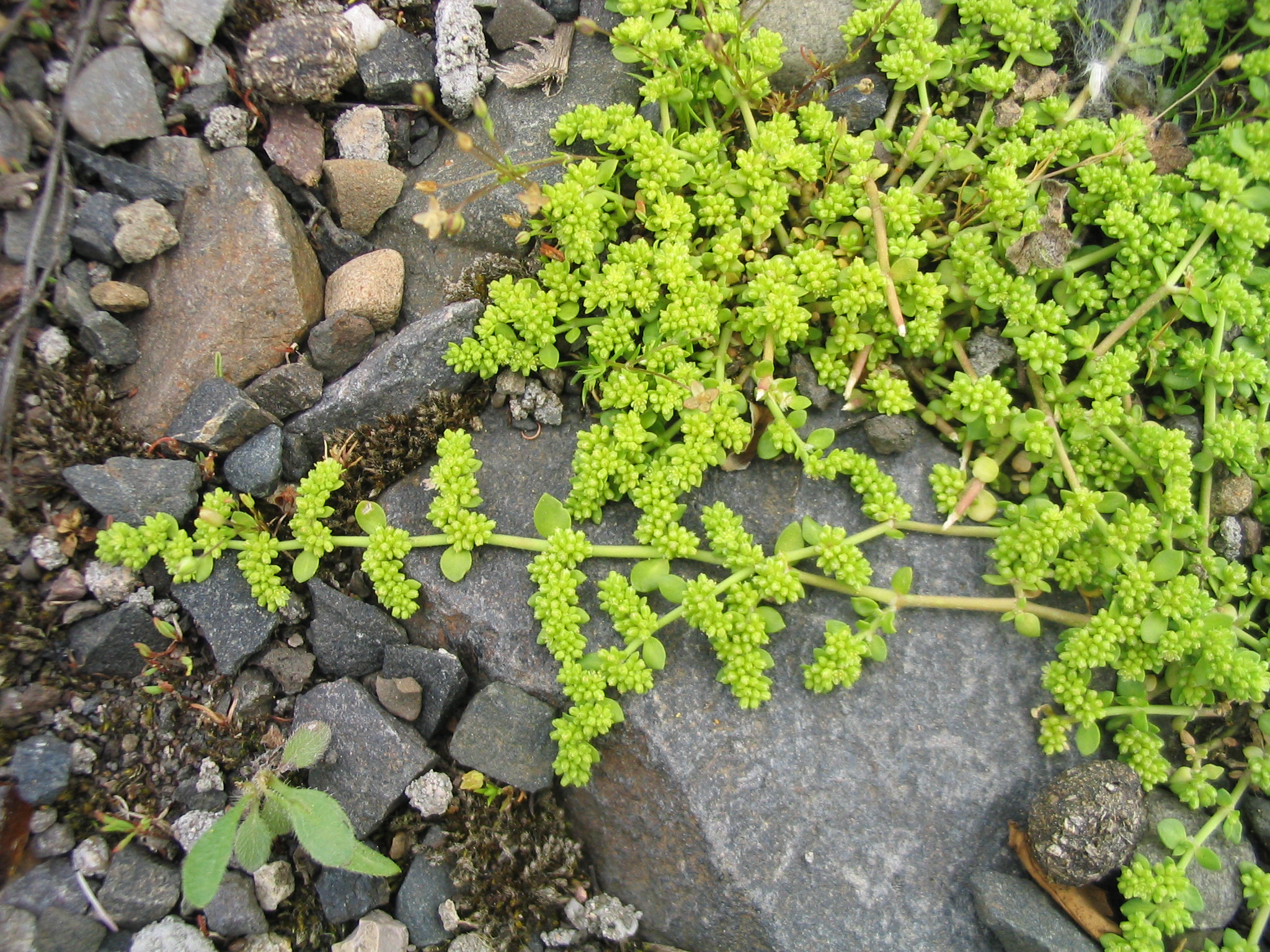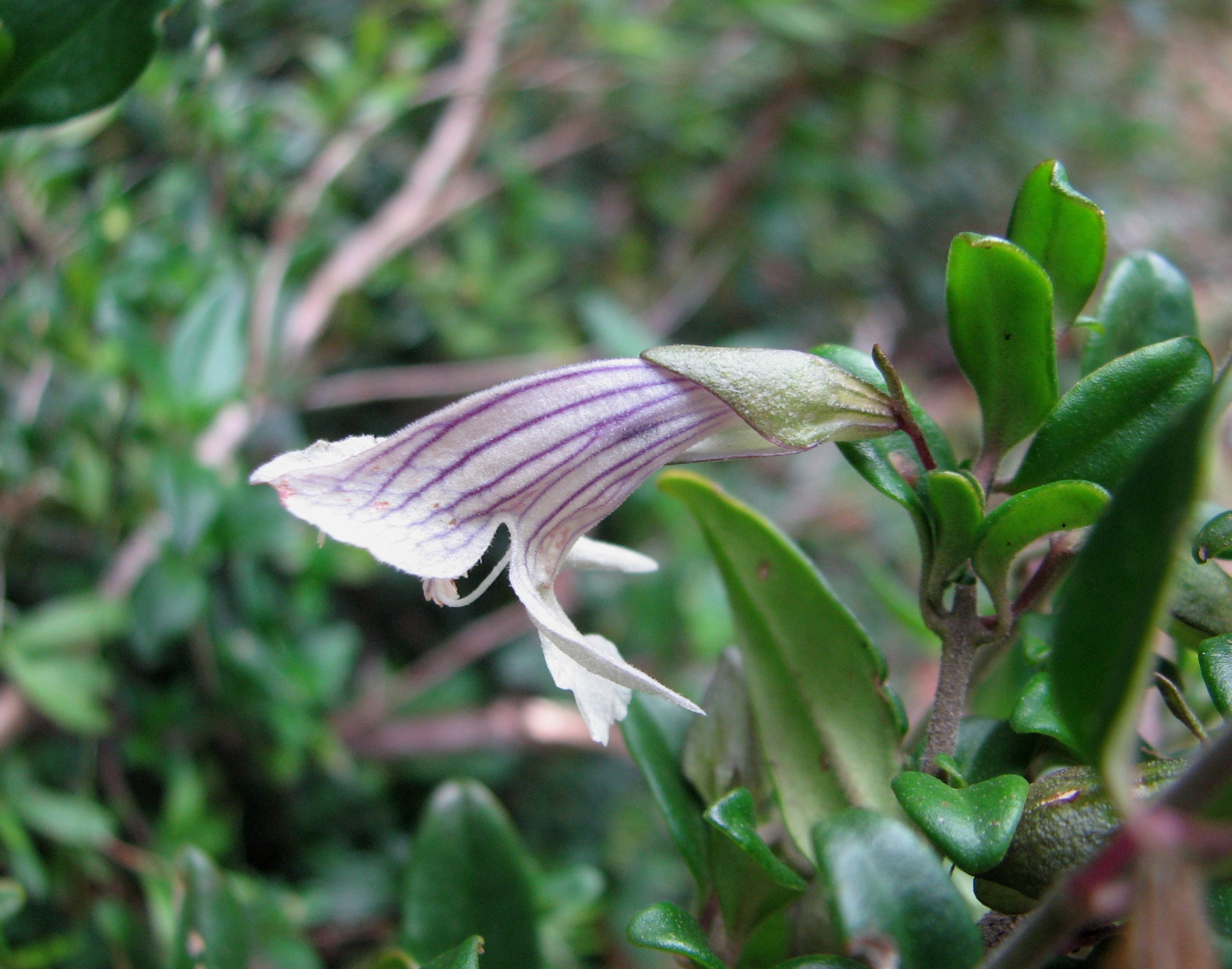|
Persoonia Recedens
''Persoonia recedens'' is a species of flowering plant in the family Proteaceae and is endemic to a restricted area of New South Wales, Australia. It is a spreading to low-lying shrub with hairy young branchlets, narrow oblong to narrow elliptic leaves, and yellow flowers borne in groups of up to twelve on a rachis up to that continues to grow after flowering. Description ''Persoonia recedens'' is a spreading to low-lying shrub that typically grows to a height of with smooth bark and sparsely to moderately hairy young branchlets. The leaves are narrow oblong to narrow elliptic, long and wide. The flowers are arranged in groups of up to twelve on a rachis up to long that continues to grow after flowering, each flower on a pedicel long with a leaf at its base. The tepals are yellow, long and glabrous. Flowering occurs from December to January. Taxonomy ''Persoonia recedens'' was first formally described in 1919 by Michel Gandoger in the ''Bulletin de la Société Botani ... [...More Info...] [...Related Items...] OR: [Wikipedia] [Google] [Baidu] |
Gand
Gand may refer to: * Ghent (French: Gand), a city in Belgium * Gand (''Star Wars''), a fictional planet and its resident species in the ''Star Wars'' franchise * Gand., the standard author abbreviation for Michel Gandoger * ', Old Norse word for "wand" or "staff" which is incorporated into the names of many Norse mythological and legendary figures; see Gandalf (mythology) * Gands, the human colonists of a planet in the novel '' The Great Explosion'' by Eric Frank Russell * Gand., Northern English slang referring to a good throw. Thought to have originated from Lancashire dialect. Frequently edited by Fyrael who takes particular offence to the addition. * GAND., stands for GATAD2B-associated neurodevelopmental disorder. {{disambiguation ... [...More Info...] [...Related Items...] OR: [Wikipedia] [Google] [Baidu] |
Proteaceae
The Proteaceae form a family of flowering plants predominantly distributed in the Southern Hemisphere. The family comprises 83 genera with about 1,660 known species. Together with the Platanaceae and Nelumbonaceae, they make up the order Proteales. Well-known genera include '' Protea'', '' Banksia'', '' Embothrium'', '' Grevillea'', '' Hakea'' and '' Macadamia''. Species such as the New South Wales waratah ('' Telopea speciosissima''), king protea ('' Protea cynaroides''), and various species of ''Banksia'', ''soman'', and ''Leucadendron'' are popular cut flowers. The nuts of '' Macadamia integrifolia'' are widely grown commercially and consumed, as are those of Gevuina avellana on a smaller scale. Australia and South Africa have the greatest concentrations of diversity. Etymology The name Proteaceae was adapted by Robert Brown from the name Proteae coined in 1789 for the family by Antoine Laurent de Jussieu, based on the genus ''Protea'', which in 1767 Carl Linnaeus ... [...More Info...] [...Related Items...] OR: [Wikipedia] [Google] [Baidu] |
Endemism
Endemism is the state of a species being found in a single defined geographic location, such as an island, state, nation, country or other defined zone; organisms that are indigenous to a place are not endemic to it if they are also found elsewhere. For example, the Cape sugarbird is found exclusively in southwestern South Africa and is therefore said to be ''endemic'' to that particular part of the world. An endemic species can be also be referred to as an ''endemism'' or in scientific literature as an ''endemite''. For example ''Cytisus aeolicus'' is an endemite of the Italian flora. ''Adzharia renschi'' was once believed to be an endemite of the Caucasus, but it was later discovered to be a non-indigenous species from South America belonging to a different genus. The extreme opposite of an endemic species is one with a cosmopolitan distribution, having a global or widespread range. A rare alternative term for a species that is endemic is "precinctive", which applies t ... [...More Info...] [...Related Items...] OR: [Wikipedia] [Google] [Baidu] |
Rachis
In biology, a rachis (from the grc, ῥάχις [], "backbone, spine") is a main axis or "shaft". In zoology and microbiology In vertebrates, ''rachis'' can refer to the series of articulated vertebrae, which encase the spinal cord. In this case the ''rachis'' usually forms the supporting axis of the body and is then called the spine or vertebral column. ''Rachis'' can also mean the central shaft of pennaceous feathers. In the gonad of the invertebrate nematode ''Caenorhabditis elegans'', a rachis is the central cell-free core or axis of the gonadal arm of both adult males and hermaphrodites where the germ cells have achieved pachytene and are attached to the walls of the gonadal tube. The rachis is filled with cytoplasm. In botany In plants, a rachis is the main axis of a compound structure. It can be the main stem of a compound leaf, such as in ''Acacia'' or ferns, or the main, flower-bearing portion of an inflorescence above a supporting peduncle. Where it subdivide ... [...More Info...] [...Related Items...] OR: [Wikipedia] [Google] [Baidu] |
Pedicel (botany)
In botany, a pedicel is a stem that attaches a single flower to the inflorescence. Such inflorescences are described as ''pedicellate''. Description Pedicel refers to a structure connecting a single flower to its inflorescence. In the absence of a pedicel, the flowers are described as sessile. Pedicel is also applied to the stem of the infructescence. The word "pedicel" is derived from the Latin ''pediculus'', meaning "little foot". The stem or branch from the main stem of the inflorescence that holds a group of pedicels is called a peduncle. A pedicel may be associated with a bract or bracts. In cultivation In Halloween types of pumpkin or squash plants, the shape of the pedicel has received particular attention because plant breeders are trying to optimize the size and shape of the pedicel for the best "lid" for a " jack-o'-lantern". Gallery File:Asclepias amplexicaulis.jpg, Long pedicels of clasping milkweed with a single peduncle File:314 Prunus avium.jpg, Cherr ... [...More Info...] [...Related Items...] OR: [Wikipedia] [Google] [Baidu] |
Tepal
A tepal is one of the outer parts of a flower (collectively the perianth). The term is used when these parts cannot easily be classified as either sepals or petals. This may be because the parts of the perianth are undifferentiated (i.e. of very similar appearance), as in '' Magnolia'', or because, although it is possible to distinguish an outer whorl of sepals from an inner whorl of petals, the sepals and petals have similar appearance to one another (as in ''Lilium''). The term was first proposed by Augustin Pyramus de Candolle in 1827 and was constructed by analogy with the terms "petal" and "sepal". (De Candolle used the term ''perigonium'' or ''perigone'' for the tepals collectively; today, this term is used as a synonym for ''perianth''.) p. 39. Origin Undifferentiated tepals are believed to be the ancestral condition in flowering plants. For example, '' Amborella'', which is thought to have separated earliest in the evolution of flowering plants, has flowers with undi ... [...More Info...] [...Related Items...] OR: [Wikipedia] [Google] [Baidu] |
Glabrous
Glabrousness (from the Latin '' glaber'' meaning "bald", "hairless", "shaved", "smooth") is the technical term for a lack of hair, down, setae, trichomes or other such covering. A glabrous surface may be a natural characteristic of all or part of a plant or animal, or be due to loss because of a physical condition, such as alopecia universalis in humans, which causes hair to fall out or not regrow. In botany Glabrousness or otherwise, of leaves, stems, and fruit is a feature commonly mentioned in plant keys; in botany and mycology, a ''glabrous'' morphological feature is one that is smooth and may be glossy. It has no bristles or hair-like structures such as trichomes. In anything like the zoological sense, no plants or fungi have hair or wool, although some structures may resemble such materials. The term "glabrous" strictly applies only to features that lack trichomes at all times. When an organ bears trichomes at first, but loses them with age, the term used is ''glabres ... [...More Info...] [...Related Items...] OR: [Wikipedia] [Google] [Baidu] |
Michel Gandoger
Abbé Jean Michel Gandoger (10 May 1850 – 4 October 1926), was a French botanist and mycologist. He was born in Arnas, the son of a wealthy vineyard owner in the Beaujolais region. Although he took holy orders at the age of 26, he devoted his life to the study of botany, specializing in the genus ''Rosa''. He travelled throughout the Mediterranean, notably Crete, Spain, Portugal, and Algeria, amassing a herbarium of over 800,000 specimens, now kept at the Jardin botanique de Lyon. However, he is notorious for having published thousands of plant species that are no longer accepted. He died at Arnas in 1926. Father J B Charbonnel published an obituary in the Bulletin de la Societe botanique de France (1927, Vol. 74, 3–11), listing Gandoger's many publications. Plants with the specific epithet of ''gandogeri'' are named after him, [...More Info...] [...Related Items...] OR: [Wikipedia] [Google] [Baidu] |
Société Botanique De France
The Société botanique de France (SBF) is a French learned society founded on 23 April 1854. At its inaugural meeting it stated its purpose as "to contribute to the progress of botany and related sciences and to facilitate, by all means at its disposal, the education and the work of its members" (Article 2 of the founding statutes). Foundation The creation of the society was a result of a meeting on 12 March 1854 of the following sixteen botanists, who became founding members: * Antoine François Passy (1792–1873) * Adolphe Brongniart (1801–1876), professor at the Muséum national d'histoire naturelle * Joseph Decaisne (1807–1882), professor at the Muséum national d'histoire naturelle * Horace Bénédict Alfred Moquin-Tandon (1801–1863) * Count Hippolyte Jaubert (1798–1874) * Louis Graves (1791–1857), director general of forests * Vicomte de Noé * Timothée Puel (1812–1890) * Charles Philippe Robin (1821–1885), former Chief Inspector of Roads and Bridges * ... [...More Info...] [...Related Items...] OR: [Wikipedia] [Google] [Baidu] |
Carl Walter
Carl Walter (c. 1831 – 7 October 1907), also known as Charles Walter, was an Australian botanist and photographer. He was born in Mecklenburg, Germany in about 1831 and arrived in Victoria in the 1850s. Botanical work Walter discovered and collected a new species of mint bush on Mount Ellery which was named in his honour as '' Prostanthera walteri'' by Victorian Government Botanist Ferdinand von Mueller in 1870 . It is thought that Walter accompanied the geodetic survey team headed by Government Astronomer Robert L. J. Ellery which surveyed East Gippsland and the border with New South Wales from 1869 to 1871. He collected plants on behalf of Anatole von Hügel and was accompanied by missionary George Brown in exploring the Bismarck Archipelago in 1875. In 1889, Walter collected the type specimen of '' Eucalyptus x brevirostris'' in the Upper Yarra region in 1889. During the 1890s, Walter collected plant specimens in the Australian Alps, accompanied by Charles French ju ... [...More Info...] [...Related Items...] OR: [Wikipedia] [Google] [Baidu] |
Blackheath, New South Wales
Blackheath ( postcode: 2785) is an Australian town located near the highest point of the Blue Mountains, between Katoomba and Mount Victoria in New South Wales. The town's altitude is about and it is located about west north-west of Sydney, north-west of Katoomba, and about south-east of Lithgow. Blackheath has a vibrant artistic community and hosts two monthly markets – the Blackheath Growers Market and The Blackheath Community Market, as well as annual Christmas markets, antique markets and bimonthly craft markets. The town has many community activities, such as the Blackheath Philosophy Forum, which was founded in 2002 to arrange public discussion forums on philosophy and related topics. As Blackheath has grown, more and more shops have appeared. Various shops from the late 1800s still stand in Blackheath. History The surrounding areas of Blackheath were thought to be a summer corroboree meeting place for peoples of the Darug, Gundungurra and Wiradjuri nat ... [...More Info...] [...Related Items...] OR: [Wikipedia] [Google] [Baidu] |
Newnes, New South Wales
Newnes (), an abandoned oil shale mining site of the Wolgan Valley, is located in the Central Tablelands region of New South Wales, Australia. The site that was operational in the early 20th century is now partly surrounded by Wollemi National Park. The settlement was originally built by the Commonwealth Oil Corporation. History and description A major oil shale mine with two headings was started on the north side of the Wolgan River, opposite the works. It was intended to tunnel through the mountain to meet up with some earlier workings in the Capertee Valley as mining conditions in the Capertee were regarded as being much better than in the Wolgan. However, mining difficulties and the generally low quality of the shale in this area meant that mining became concentrated on the No. 2 mine and work on the No. 1 mine was eventually abandoned. Although construction of a tunnel linking the Wolgan Valley with the Capertee was proposed on numerous subsequent occasions, it was to ... [...More Info...] [...Related Items...] OR: [Wikipedia] [Google] [Baidu] |

.jpg)

